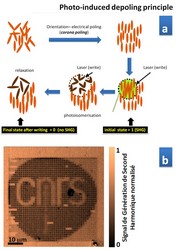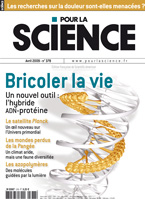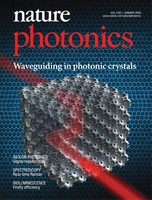- Index
- >Research
- >Team Samson
- >Optical Property Diagnostics and Photoinduced Molecular Structuring
Optical Property Diagnostics and Photoinduced Molecular Structuring
(R. Barillé, D. Gindre)
 In this research focus, we are developing novel optical information storage methods in polymers, leveraging the photoinduced reorientation properties of azobenzene derivatives (see Figure a, opposite). These techniques aim to achieve high-resolution mapping of the second-order nonlinear susceptibility of materials, which we probe through femtosecond imaging experiments based on second-harmonic generation (SHG) microscopy.
In this research focus, we are developing novel optical information storage methods in polymers, leveraging the photoinduced reorientation properties of azobenzene derivatives (see Figure a, opposite). These techniques aim to achieve high-resolution mapping of the second-order nonlinear susceptibility of materials, which we probe through femtosecond imaging experiments based on second-harmonic generation (SHG) microscopy.
This innovative and highly effective technique enables nanometric encoding and retrieval of images by optically controlling the dimerization rate of molecules. It serves as a nearly undetectable optical tagging method and is currently the subject of a CNRS patent application entitled "Reversible recording medium for optical information storage, and method for reversible recording on such a medium."
 In parallel, we carry out atomic force microscopy (AFM) experiments to characterize surface morphologies, with the aim of developing polymer- and organic-based electronic components, as well as new materials for nonlinear optics (NLO). We also pursue experimental investigations using photoresponsive molecules such as azobenzenes, to trigger and elucidate surface modification mechanisms or thin-film structuring. A popular science summary of this work appeared in Pour la Science, No. 378, April 2009 (see figure opposite).
In parallel, we carry out atomic force microscopy (AFM) experiments to characterize surface morphologies, with the aim of developing polymer- and organic-based electronic components, as well as new materials for nonlinear optics (NLO). We also pursue experimental investigations using photoresponsive molecules such as azobenzenes, to trigger and elucidate surface modification mechanisms or thin-film structuring. A popular science summary of this work appeared in Pour la Science, No. 378, April 2009 (see figure opposite).
Among our most significant results, we have demonstrated the feasibility of spontaneous surface structuring of azopolymer thin films using a single laser beam. We also introduced the new concept of neurophotonics, which is based on the remarkable properties of self-organized microgratings—specifically, their capacity to be erased and reconfigured.
 Finally, several of our projects focus on diagnostics, functionalization, and the characterization of specific compounds for applications in optoelectronic devices. This involves investigating second- and third-order NLO properties in highly polarizable, film-forming materials, and analyzing the dynamics of photoinduced structuring in both surface and bulk configurations. As an example, we have recently shown the potential of modified DNA for holographic applications (Nature Photonics, Research Highlights, 2, 6–7 (2008), see figure opposite), and demonstrated the feasibility of optically addressable memories based on thermally activated molecular switching.
Finally, several of our projects focus on diagnostics, functionalization, and the characterization of specific compounds for applications in optoelectronic devices. This involves investigating second- and third-order NLO properties in highly polarizable, film-forming materials, and analyzing the dynamics of photoinduced structuring in both surface and bulk configurations. As an example, we have recently shown the potential of modified DNA for holographic applications (Nature Photonics, Research Highlights, 2, 6–7 (2008), see figure opposite), and demonstrated the feasibility of optically addressable memories based on thermally activated molecular switching.


